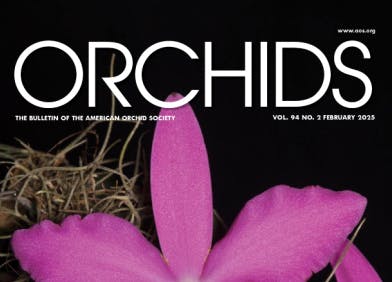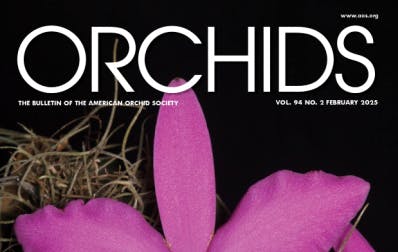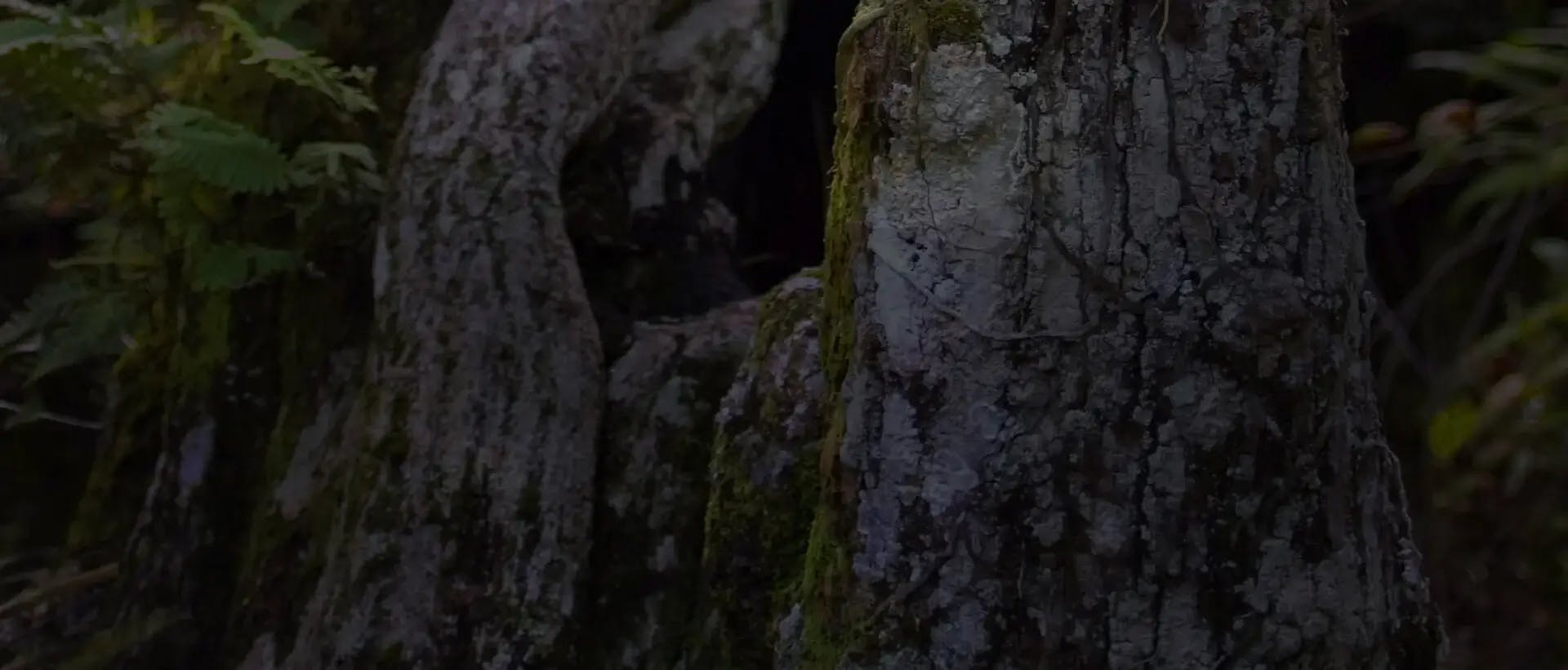
With a range from southern Florida to Argentina and Paraguay, it is no surprise that the spectacular cow horn orchid has multiple common names. The genus name, Cyrtopodium, comes from the Greek kyrtos (meaning curved) and podion (referring to the column foot, a downward extension of the column for attaching the lip). The species name punctatum references the spotted and often heavily maculated reddish-brown patterns on the overall mostly greenishyellow flowers. It is also commonly called the dotted orchid. There are about 54 accepted species (Plants of the World Online 2024) in the genus.
[1] A well-grown plant in a 10-inch (25 cm) pot can provide an abundance of flowers. The yellow-green base color of the flowers (inset) provides a delightful offset for the rich reddish-brown spots. The sepals are often more heavily marked.

Blooming occurs in the spring to early summer when the inflorescences emerge at the base of newly growing pseudobulbs. Inflorescences to 4 feet (1.2 m) or more are often branched and may produce as many as 180 dotted blossoms. The number of nearly 2-inch-wide (5 cm) flowers at times may appear to be even grander as the flower bracts that protect the developing buds are equally brightly colored and remain with the flowers after opening. It is also often called the bee swarm orchid, as the magnificent inflorescences wafting in the slightest breeze truly resemble a swarm of Euglossine bees and serves to attract them as their natural pollinator. The name cow horn orchid (or cigar orchid) comes from the shape of its large pseudobulbs or perhaps giant cigars to 3 feet long (90 cm). New pseudobulbs are distally topped with 5–7 plicate leaves to 2 feet (60 cm) long. After having shed their long thin leaves, each pseudobulb remains protected by a persistent bract over each joint ending with a very sharp spike-like tip. Beware! It is advisable to wear sturdy gloves when dividing or repotting.
[2] Cyrtopodium punctatum ‘Lynette’ CCM/AOS, grown by Bill and Darlene Ross, was awarded in 2013 with approximately 900 flowers growing in a 12-inch (30 cm) pot. Photograph by Beth Lamb.

LIGHT LEVELS
To produce an abundance of their attractive flowers, Cyrtopodium prefer full sun — as many hours as you can provide — and are recorded blooming indoors as far north as Ontario, Canada.
TEMPERATURES
Cyrtopodium, closely related to cymbidiums, prefer warm temperatures at night, but can easily tolerate minimums down to 50 F (10 C). They reportedly can survive temperatures as low as 30 F (−1 C) for short periods where they naturally range in Florida. Day temperatures may exceed 90 F (32 C) in high light settings but are easily tolerated with high humidity and good air circulation.
POTTING AND WATERING
Cyrtopodiums are handily grown in a standard pot of quick draining bark mix. Regular (and careful) dividing and repotting will keep it in accordance with your growing conditions and available space. Although cyrtopodiums need a regular watering and fertilizer regimen during their active growth period from early spring to fall, it is more important that the potting medium does not become soggy or start to break down. Although many growers consider them heavy feeders, perfect drainage is essential. Waterings should be drastically reduced during the winter after the leaves have been shed, and not resumed until new growth is noted in the spring. It may be that the drier winter conditions help them tolerate cooler temperatures. Like most orchids, they do not tolerate being cold and wet.
Although a potential challenge to safely divide and repot, the long-lasting and striking flowers are well worth the space they require.
[3] The equally brightly colored and marked floral bracts add to the fullness of the inflorescences and may add a greater wind-sail effect for movement in the slightest of breezes to help attract its pollinator, the tropical Euglossine bees.

— Charles Wilson, the current chair of the Atlanta Judging Center, has been growing orchids for over 45 years. His special interests include Bulbophyllum, Cattleya, Coelogyne, Galeandra, Paphiopedilum and about everything else, too. He is an active volunteer with the AOS and can be reached at zooemeritus@ gmail.com.












